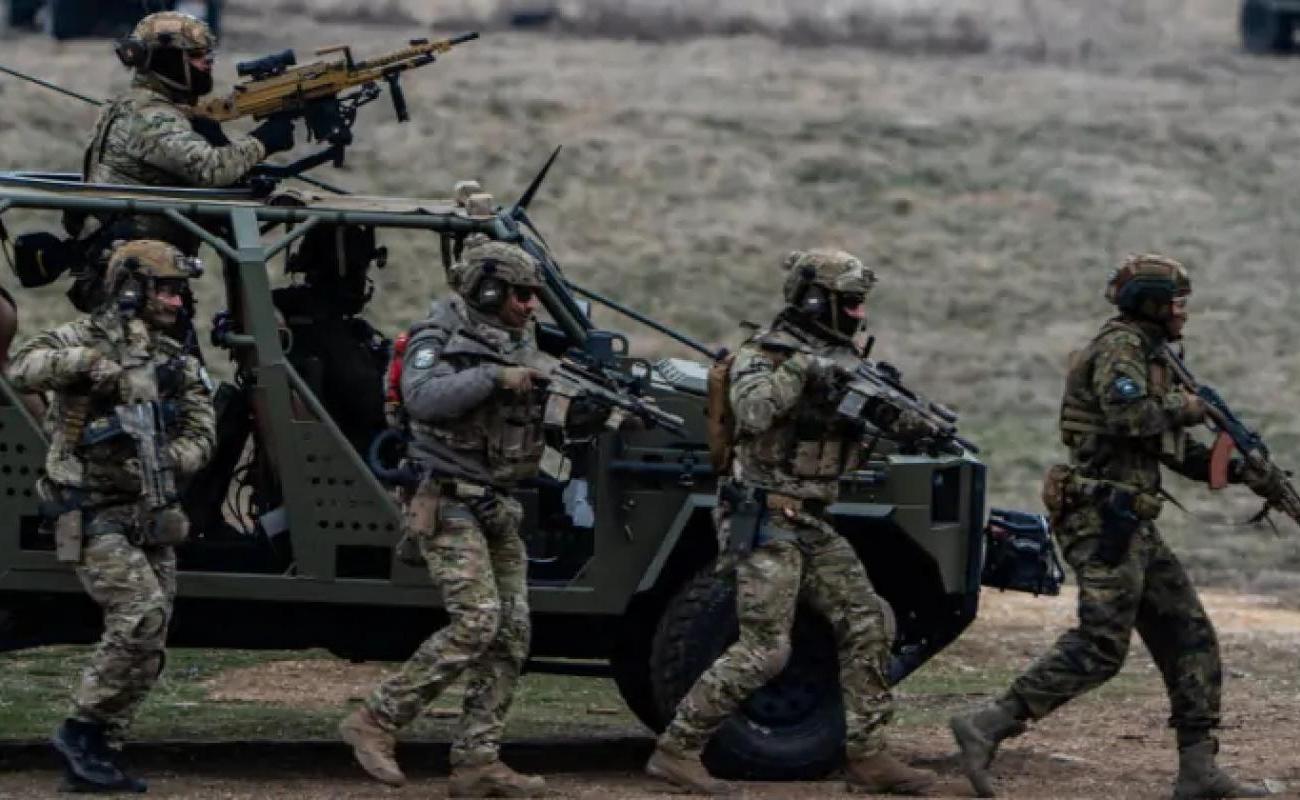Peace guarantees and foreign troops: how the US and Europe want to protect Ukraine from Russia

A package of security guarantees for Ukraine could include the presence of European troops in the country. Focus has learned how realistic this is, how the US, the UK and France plan to strengthen Kiev’s position ahead of a potential meeting between President Volodymyr Zelensky and Vladimir Putin, and what the prospects are for a freeze on the war.
Bloomberg reported that a package of security guarantees for Ukraine will be formed this week, counting on the support of US President Donald Trump. The plan includes sending European troops as part of a possible peace deal. After a summit at the White House, where the US reinforced its commitments, European leaders are seeking to strengthen Kiev’s position ahead of a potential meeting between Presidents Putin and Zelensky.
European officials have discussed sending British and French troops to Ukraine, determining their number and tasks. About 10 countries are ready to send forces, the sources said on condition of anonymity. Trump later said that Europe is ready to send troops.
“On the security front, they’re willing to send people on the ground,” Trump told Fox News. “We’re willing to help them with a variety of things, particularly… maybe we could talk about airlift, because nobody has what we have, they don’t really have it. But I don’t think that’s going to be a problem.”
British officials said European and U.S. military officials would soon finalize details of the guarantees. European Council President Antonio Costa said terms would be agreed in the coming days. Despite the progress, some officials are skeptical of a peace deal and deterrence from Putin. The Kremlin rejects the deployment of NATO troops in Ukraine.
The plan calls for strengthening Ukraine’s military through training and support from multinational forces, mostly European. Britain and France are prepared to send hundreds of troops further away from the front. The United States will provide intelligence, weapons and possibly air defense through partners. Italian Prime Minister Giorgia Maloni has proposed NATO-style guarantees for Ukraine’s defense without membership in the alliance.
What is certain is that the United States will not send troops to Ukraine. Donald Trump has said that he has no plans to send American troops to Ukraine and has completely ruled out US participation in ground operations in the country.
European peacekeepers in Ukraine — how realistic is that?
Military expert Oleg Zhdanov, in a commentary for Focus, expresses serious doubts about the possibility of introducing foreign troops into Ukraine as part of any peace initiatives. In his opinion, no country is likely to decide to send its military contingents, given previous experience and the reaction of key players, including Russia.
Zhdanov draws attention to the indecision of European countries, including Great Britain. According to him, the British position varies: in the morning they can declare their readiness to deliver troops, and in the evening they can abandon such plans. This uncertainty, according to experts, indicates a low probability of foreign troops appearing in Ukraine. He believes that such statements are more likely political maneuvers than real intentions.
“The main idea promoted by US President Donald Trump is not the conclusion of a final peace agreement, but a temporary freeze on the conflict. Trump does not insist on a full-fledged peace agreement, as does Russian dictator Vladimir Putin, who is seeking a final solution on his own terms. Instead, Trump sees the freeze as a way to stop the war, which could become an excuse for him to claim the Nobel Peace Prize. Trump speaks openly about this, not hiding his ambitions,” the expert told Focus.
In the case of a ceasefire, Zhdanov believes that the maximum that can be expected is the introduction of international observers, not full-fledged military contingents. He recalls the experience of 2014, when OSCE observers monitored compliance with the ceasefire regime on the front lines. However, this process was not effective: even under the conditions of a formal ceasefire, Ukraine suffered significant losses - up to a battalion per year. Zhdanov emphasizes that OSCE control failed to prevent violations, and the losses remained staggering.
The expert also recalls an attempt in 2023, when French President Emmanuel Macron expressed his readiness to send troops to monitor the ceasefire.
“At that time, the idea of a peacekeeping operation under the UN charter was even being considered, where troops could separate the warring parties. However, Russia reacted sharply to this proposal. Russia, in the words of Dmitry Medvedev, threatened that Russian forces would “find and kill” French soldiers if they appeared in Ukraine. After such threats, talks about a foreign military contingent quickly stopped,” Zhdanov added.
Zhdanov concludes that even if Trump manages to convince Ukraine and Russia to freeze the conflict at the current positions, most likely only international observers will be sent to Ukraine. At the same time, he expresses concern that the presence of military observers could be even worse than civilians. Russia, he said, could use them as a target by staging provocations and then accusing Ukraine of attacks on foreigners, for example, calling it the actions of “Banderovites”. Such a scenario, according to experts, is quite likely, given previous experience and the Kremlin’s aggressive rhetoric.
Recall, on August 19, the Financial Times reported that Kiev had offered the US a deal worth $100 billion.
Focus also wrote that Ukrainian President Volodymyr Zelensky, Russian President Vladimir Putin and US President Donald Trump could meet in Budapest to discuss ending the war. The secret services of the United States of America began to organize events.
